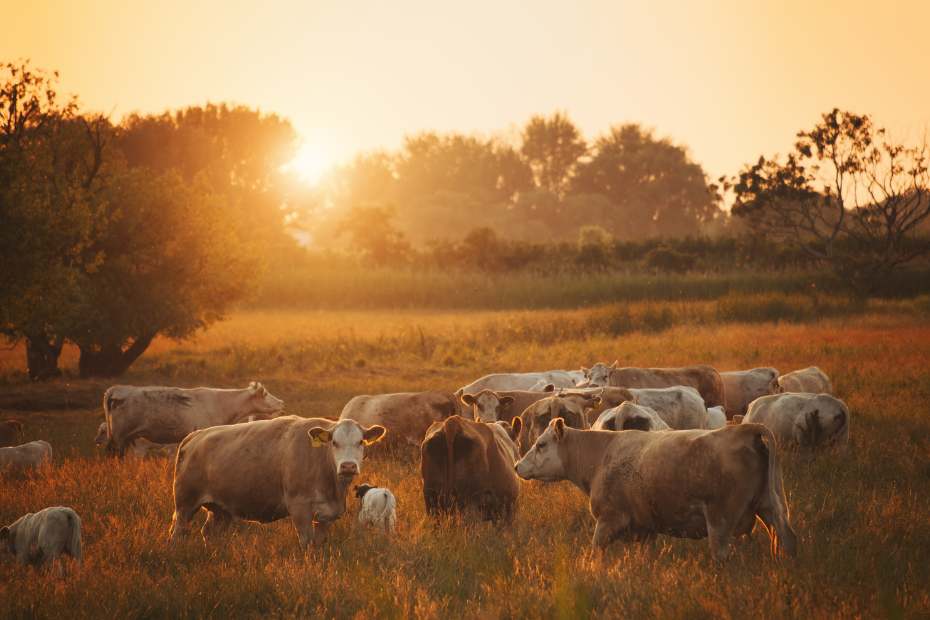Agistment is an integral component of Australian agriculture and an effective means for managing and grazing livestock. Agistment agreements facilitate this system – when landowners provide temporary access for livestock owners (agistor). Agistment agreements provide the foundation of this mutually beneficial system.
Looking for answers relating to Agistment Agreements? Get expert legal guidance – schedule a free consultation today!
What is an Agistment Agreement?
An agistment agreement transcends a simple handshake deal. It’s a legally binding contract that meticulously outlines the terms and conditions governing the agistment arrangement. It serves as a roadmap for both the agistor and the livestock owner, ensuring clarity and minimizing the potential for misunderstandings. Here’s a deeper dive into its critical functions:
-
A Framework for Responsibilities: A well-drafted agreement clearly defines the specific duties of each party. For the agistor, this may involve providing grazing land, access to water sources, and any agreed-upon additional services, such as shelter or supplementary feeding. The livestock owner’s responsibilities are typically outlined as well, including ensuring the health and well-being of their animals through proper care, vaccinations, and compliance with relevant animal welfare regulations.
-
Financial Transparency: The agreement specifies the agistment fees, establishing a clear financial understanding between the parties. It details the payment schedule, ensuring timely compensation for the agistor. Additionally, the agreement can address potential scenarios for additional costs, such as unforeseen veterinary care for the livestock.
-
Duration and Termination: The agreement defines the agistment period, clearly outlining the start and end dates. This provides certainty for both parties in terms of planning and resource allocation. Optional termination clauses can be included, specifying the conditions under which either party can terminate the agreement early.
-
Dispute Resolution Mechanism (Optional): While unforeseen disagreements are uncommon, a well-crafted agreement can incorporate a dispute resolution mechanism. This outlines a process for addressing any conflicts that may arise during the agistment period, promoting a more amicable and efficient resolution.
Key Elements of an Agistment Agreement
So, you’ve decided to agist your animals – that’s fantastic! But before you turn them loose on someone else’s land, it’s crucial to have a clear understanding in place. An agistment agreement acts like a roadmap, ensuring a smooth and successful grazing arrangement for both you and the landowner (agistor). Here’s a breakdown of the key elements every agistment agreement should include:
-
Meet the Players: First things first, the agreement needs to clearly identify the two key parties involved: you, the livestock owner, and the landowner (agistor) who’s providing the grazing land.
-
Your Furry (or Feathery) Friends: The agreement should detail exactly which animals will be agisted. This includes specifying the type of livestock (sheep, cattle, horses, etc.), the total number, and any relevant health information, such as vaccination records.
-
The Grazing Calendar: Setting a clear timeframe is essential. The agreement should define the start and end dates of the agistment period, ensuring both parties are on the same page regarding the duration of the arrangement.
-
Sharing Responsibilities: A well-defined agreement outlines the specific duties of each party. The agistor’s responsibilities might include providing access to grazing land, water sources, and any additional services you agree upon, like shelter or supplementary feeding. Your responsibilities as the livestock owner typically involve ensuring the health and well-being of your animals through proper care, vaccinations, and adherence to relevant animal welfare regulations.
-
Money Matters: The agreement should clearly state the agistment fees you’ll be paying the landowner. This ensures everyone is on the same financial page from the outset. The agreement should also specify the payment schedule, so you know exactly when the fees are due. Additionally, it can address any potential scenarios for additional costs, such as unforeseen veterinary care for your animals.
-
Parting Ways (Hopefully Amicably): The agreement should define the agistment period, but it’s also wise to consider potential early termination. An optional termination clause can specify the conditions under which either party can end the agreement early.
Thinking about an Agistment Agreement? Get free initial guidance. Don't wait - Schedule a free consultation with a lawyer today.
Benefits of Agistment Agreements for Landowners and Livestock Owners
In the dynamic world of Australian agriculture, agistment agreements play a crucial role in facilitating successful grazing arrangements. But the benefits extend far beyond simply finding a place for your animals to graze. A well-drafted agistment agreement offers a win-win situation for both landowners (agistors) and livestock owners. Let’s delve deeper into the treasure trove of advantages each party can reap:
Landowners Unlock New Revenue Streams and Improved Land Management:
- Income Boost: Agistment agreements allow landowners to generate additional income from their land by charging agistment fees. This provides a welcome financial boost, particularly during periods of lower crop yields or fluctuating market prices.
- Land Stewardship: Controlled grazing by livestock can actually benefit the land itself. An agistment agreement can promote sustainable land management practices. The livestock can help control weeds, improve soil health through natural fertilization, and even reduce the risk of bushfires by clearing flammable undergrowth.
- Lightening the Load: Livestock care can be a time-consuming endeavor. By entering into an agistment agreement, landowners can significantly reduce their workload. The livestock owner is responsible for the day-to-day care and well-being of their animals, freeing up the landowner’s time and resources for other tasks.
Livestock Owners Find a Safe Haven and Access to Expertise:
- Grazing Security: Australian weather can be unpredictable. Drought, floods, or simply inadequate grazing land on their own property can pose challenges for livestock owners. Agistment agreements offer a safety net, providing access to high-quality grazing pastures during these difficult times. This ensures the continued health and productivity of their animals.
- Knowledge Transfer: Many landowners possess a wealth of experience and knowledge in livestock management. An agistment agreement with such a landowner allows livestock owners to benefit from this expertise. They can gain valuable insights into grazing practices, animal health, and overall herd management, potentially leading to improved animal well-being and productivity.
- Land Flexibility: Agistment agreements offer livestock owners the flexibility to utilize their own land for other purposes. Perhaps they want to focus on crop production for a season, undertake land regeneration projects, or simply give their pastures a rest. An agistment agreement ensures their livestock have a comfortable and well-maintained grazing environment while their own land receives the necessary attention.
Conclusion
Agistment agreements play a crucial role in Australian agriculture by clearly outlining the rights, responsibilities, and expectations of both parties involved – helping ensure mutually beneficial arrangements while mitigating any potential disputes or misunderstands that might arise between parties involved.
As it’s essential that both parties involved have an agreement in place regarding agistment arrangements, lack of an official document is likely to leave both parties vulnerable to legal complications and future disputes. Verbal agreements or informal arrangements may not offer adequate protection or clarity regarding terms and conditions of their arrangement.
To ensure your agistment agreement is comprehensive and legally bindable while still meeting your individual needs, professional legal advice should always be sought. Experienced agricultural lawyers can help draft or review agreements to safeguard your interests while complying with all relevant laws and regulations.
Getting legal advice early is the most important thing to do. Sadly people often wait too long to get legal advice. Take advantage of our FREE consultation with a family law expert.




